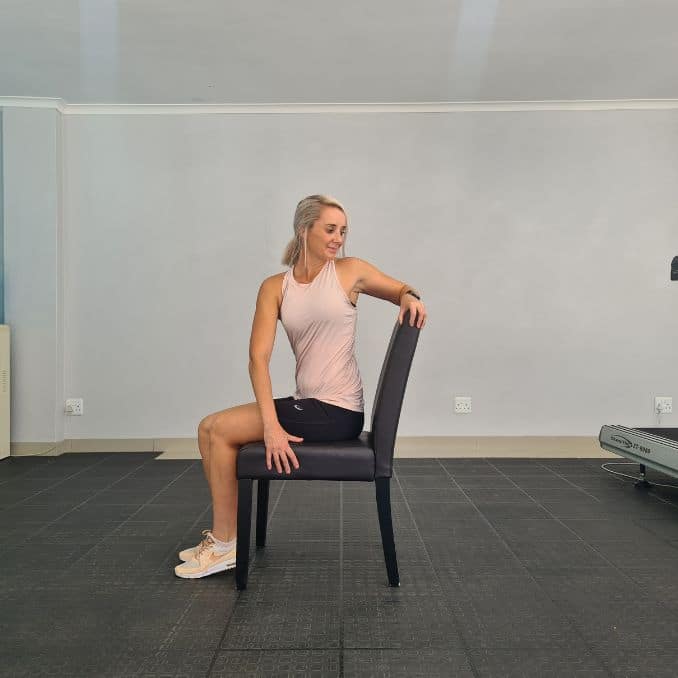
The spine comprises a series of curves and joints, so naturally, our movements and the weight we place on it will put pressure on specific segments more than others. Because of this, we’ll occasionally experience pain in some regions of our bodies. When this happens, identifying the source of pain is crucial. However, there are ways to determine what causes the pain and the Si Joint Pain Exercises.
Sacroiliac joint pain is one of the most common types of pain stemming from an unhealthy lifestyle. The Sacroiliac Joint (SI Joint) is located in the lower part of the back, where the sacrum (the bone at the base of the spine) meets the ilium (the pelvic bone of the lower spine).
Factors That Cause SI Joint Pain
-
SI Joint Injuries
An injury can be a significant factor in causing pain in the SI joint. Injury to the SI joint can occur for various reasons, such as falls, car accidents, sports, or repetitive activities that strain the joint. Trauma to the joint can cause ligament sprains or tears, muscle strains, and even fractures. These injuries can eventually result in inflammation and irritation of muscles surrounding the joint, leading to pain.
-
Arthritis
Arthritis is a term that refers to inflammation and damage of the joint tissues, which can lead to pain, stiffness, and reduced mobility. Additionally, arthritis is a degenerative condition that can affect various joints, including the sacroiliac (SI) joint. Several types of arthritis can affect the SI joint, including osteoarthritis, rheumatoid arthritis, psoriatic arthritis, ankylosing spondylitis, and reactive arthritis.
-
Pregnancy
Pregnancy is a wonderful and astonishing experience for women, but it can also bring about certain difficulties. One of the challenges is discomfort in the SI joint. While pregnant, the body secretes a hormone known as relaxin. As the name implies, this hormone relaxes and loosens the muscles, joints, and ligaments in the body, including those in the SI joint.
The increase in flexibility basically may result in joint instability and pain. As the fetus develops and the uterus expands, it puts more pressure on the pelvis and SI joint, resulting in inflammation and discomfort. Moreover, as the body adjusts to accommodate the growing fetus, the center of gravity shifts forward, increasing the tension on the SI joint and lower back.
It should be remembered that pregnancy-related sacroiliac pain is not a universal experience among women. Those who encounter this discomfort can try mild exercises like pelvic tilts and pregnancy low-impact workouts such as swimming or walking for relief. Wearing a pregnancy support belt can also reduce pressure on the pelvis and offer lower back support.
-
Repetitive Stress
Prolonged sitting, standing, walking, or running are some of the everyday activities that can cause repetitive stress and aggravate SI joint pain, leading to more pain and inflammation due to excessive pressure on the joint. Frequent actions involving twisting, bending, or turning can lead to excessive wear and tear on the SI joint, a common cause of pain. This can certainly result in micro-tears in the ligaments and muscles that support the joint, leading to inflammation and discomfort.
-
Poor Posture
Improper posture may contribute to pain and discomfort in the SI joint by causing an imbalance in the alignment of the spine and pelvis. The curvature of the spine is caused by poor postures, such as a forward head posture or rounded shoulders, which may put pressure on the SI joint, leading to discomfort and pain. Additionally, improper posture may weaken the muscles that support the SI joint, increasing the risk of injury and pain, particularly when participating in repetitive activities like running or cycling. Maintaining proper posture to avoid pain and discomfort in the SI joint is crucial.
-
Degenerative Joint Disease
Due to the erosion of the joint’s cushioning cartilage, SI joint pain can be caused by degenerative joint disease, also known as osteoarthritis. This leads to bone-on-bone contact and can cause inflammation, stiffness, and pain in the affected joint. Degenerative joint disease can contribute to SI joint pain, which may be felt in various areas, including the lower back, buttocks, hips, and thighs. Certain movements and activities, such as sitting or standing for extended periods or walking on uneven surfaces, can exacerbate the pain.
Best Sacroiliac Joint Pain Exercises
1. Hamstring Stretch
Begin in an upright standing position, maintaining good alignment with your head, shoulders, hips, and legs. Engage your core muscles. Then, hinge through your hips and step your left leg out front, keeping your leg straight as you point your toes toward the ceiling. Hold this position for 20 seconds. After that, return to the starting position and repeat the movement on the opposite leg.
Start with 1 set of 2 repetitions on each side, holding for 20 seconds. The intensity is light.
 |
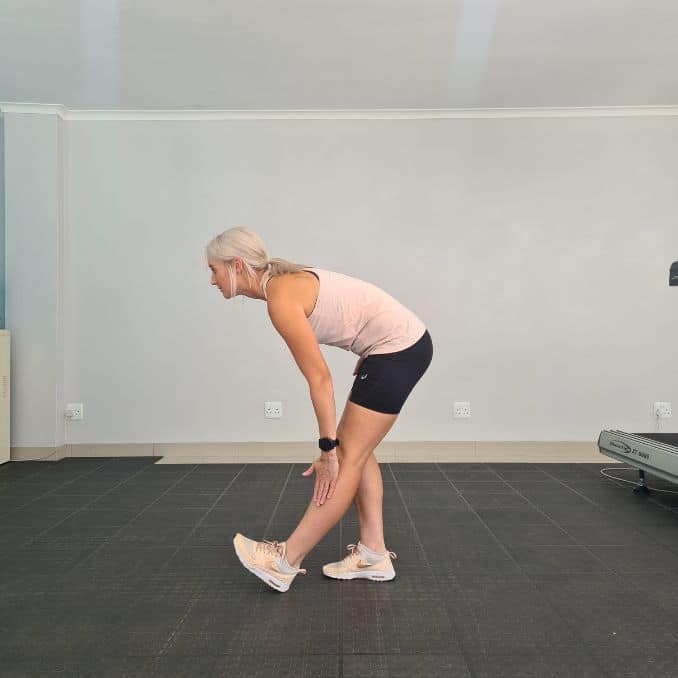 |
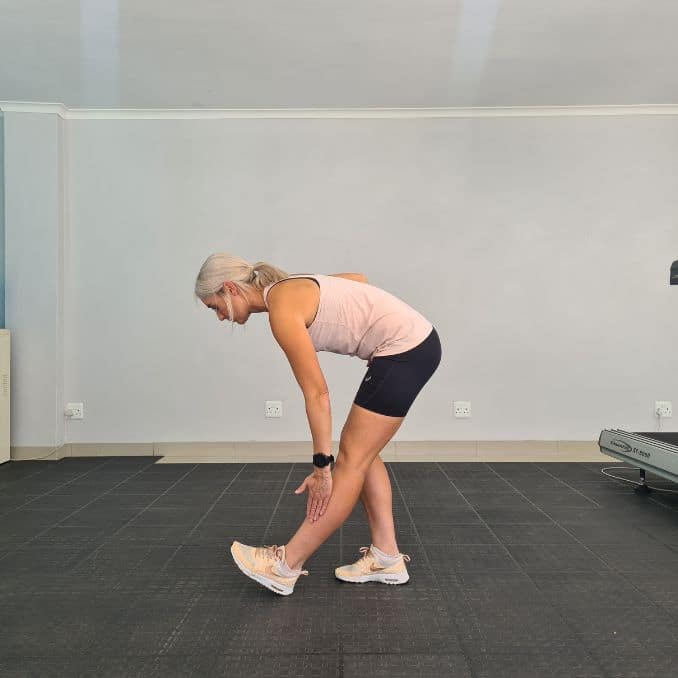 |
Hamstring Stretch
Hamstring Stretches are often recommended for people with sacroiliac joint (SI Joint) pain because they can help improve the flexibility and mobility of the muscles surrounding the SI joint, which can help reduce pain and discomfort.
Benefits Of Hamstring Stretches For People With SI Joint Pain:
A. Reduces Tension In The Lower Back
Tight hamstrings can contribute to tension and strain in the lower back, exacerbating SI joint pain. Stretching the hamstrings can help reduce tension in the lower back and alleviate SI joint pain.
B. Improves Pelvic Stability
Tight hamstrings can pull the pelvis out of alignment, which can cause instability in the SI joint. Stretching the hamstrings can help restore proper pelvic alignment and improve stability in the SI joint.
C. Increase Flexibility
Hamstring stretches can improve the flexibility of the muscles and ligaments surrounding the SI joints, which can help reduce pain and stiffness.
2. Calf Roll
For this exercise, use a massage stick, rolling pin, foam roller, or anything you can roll to massage the calf muscles.
Begin in an upright sitting position on the chair or bench with your knees bent and feet flat on the floor. Then, place the massage stick at the back of the knee, rolling through your inner and outer calf area. Lastly, relax and repeat the movement on the opposite leg.
Start with 1 set of 10 repetitions on each side. After that, perform the exercise in a smooth, controlled movement with a good stop at the end position. The intensity is moderate.
 |
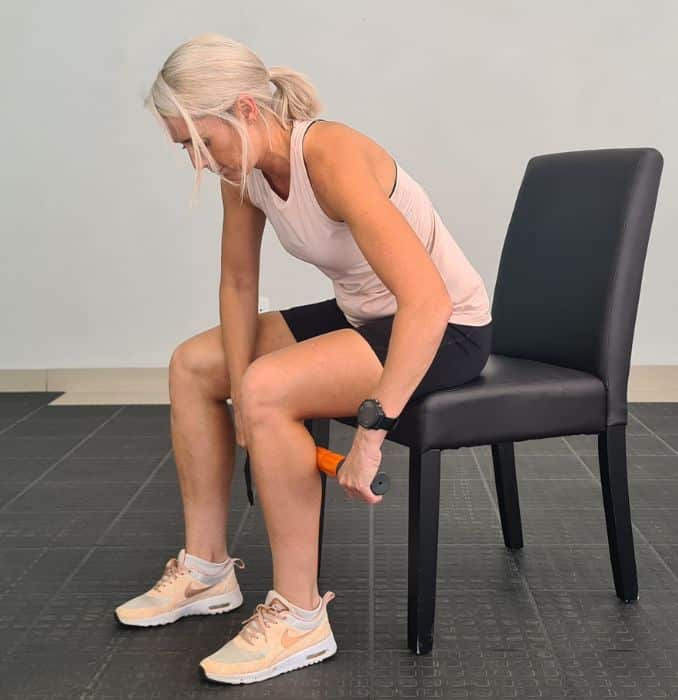 |
Calf Roll
The calf roll or calf massage is a technique that can help alleviate sacroiliac joint pain by releasing tension in the muscles and fascia of the lower leg.
Benefits Of Calf Roll For People With SI Joint Pain:
A. Release Tension In The Leg Muscles
Tightness in the calf muscles can contribute to tension and strain in the lower back and SI joint. The calf roll helps release tension in the calf muscles, reducing pressure on the SI joint and alleviating pain.
B. Improves Circulation
The calf roll can help improve circulation in the lower legs, promoting healing and reducing inflammation around the SI joint.
C. Increase Mobility
Tight calf muscles can limit the mobility of an ankle joint, which can impact the alignment of the leg and pelvis. The calf roll can help improve ankle mobility, which can reduce stress on the SI joint and improve overall function.
3. Spinal Twist
Firstly, begin in an upright sitting position on the chair with your knees bent and feet flat on the floor. Maintaining good alignment with your head, shoulders, and hips. Engage your core, place one hand on your opposite knee, and twist your upper body to the side. Then, hold this position for a couple of seconds. Lastly, relax and repeat the movement on the opposite side.
Start with 1 set of 10 repetitions in each direction. Perform the exercise in a smooth, controlled movement with a good hold at the end position. The intensity is light.
Spinal Twist
Spinal Twists can be a beneficial exercise for people with sacroiliac joint (SI joint) pain because it can help improve the mobility and flexibility of the spine and surrounding muscles, which can reduce pain and discomfort.
Benefits Of Spinal Twist For People With SI Joint Pain:
1. Releases Tension In The Back Muscles
The Spinal Twist can help release tension in the back muscles, including the muscles surrounding the SI joint. This can reduce pressure on the joint and alleviate pain and discomfort
2. Improves Spinal Mobility
Spinal Twist can help improve the spine’s mobility, reducing stress and strain on the SI joint.
3. Stretches The Muscles Surrounding The SI Joint
Spinal Twist can help stretch the muscles surrounding the SI joint, including the lower back, hips, and glutes. This can improve flexibility and reduce the tension and strain on the SI Joint.
Other Exercises That Are Best For People With SI Joint Pain:
- Pelvic Tilts
- Knee To Chest Stretch
- Bridge
- Bird Dog
Worst Sacroiliac Joint Pain Exercises
1. Deadlift
A Deadlift involves forward bending as you try to lift a weight. Sacroiliac pain begins when the pelvis does not begin in a tucked position when initiating the lift, thus spraining the joint. The SI joints can also become sprained if you curl your lower back too much during the lift. It is ideal to maintain a straight back, if possible, at all times during the lift.
How To Modify This:
Begin in an upright standing position with your feet shoulder-width apart, maintaining good alignment with your head, shoulders, hips, and legs. Then, engage your core and hinge through your hips, lowering your arms and keeping your upper body parallel with the floor. After that, relax and return to the starting position. Repeat the movement.
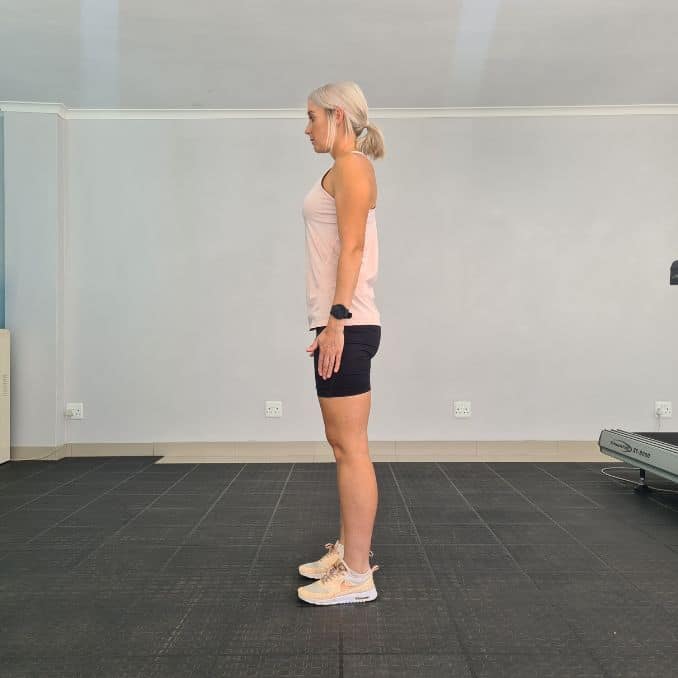 |
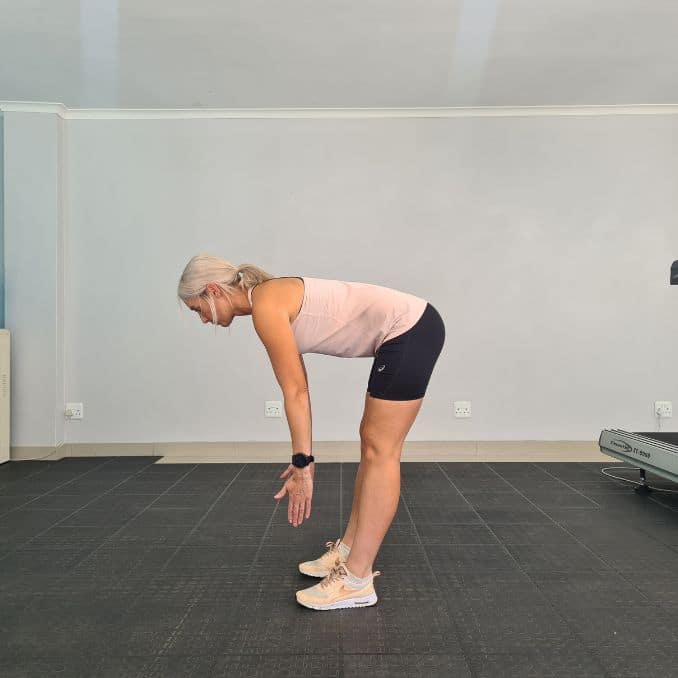 |
Deadlift
The deadlift is a compound exercise that primarily works the muscles of the lower body, including the hamstrings, glutes, and lower back. However, it also places a significant amount of stress on the sacroiliac (SI) joint, which is the joint that connects the sacrum (the triangular bone at the base of the spine) to the pelvis.
2. Single Leg Or Heavy Load Squats
Single-leg or Heavy Load Squats can be challenging for people with SI joint pain because these exercises require a lot of stabilization from the muscles surrounding the SI joint. If the SI joint is already inflamed or injured, performing exercises that require a lot of stabilization can cause further pain and discomfort.
Alternative Move:
Firstly, begin in an upright standing position with your feet hip-width apart, maintaining good alignment with your head, shoulders, hips, and legs. Then, place your hands on your hips. Slowly place all your weight on one leg as you lift and extend your opposite leg forward. Engage your core and hinge through your hips to bend your upper body forward. Afterward, return to the starting position and repeat the movement on the opposite side.
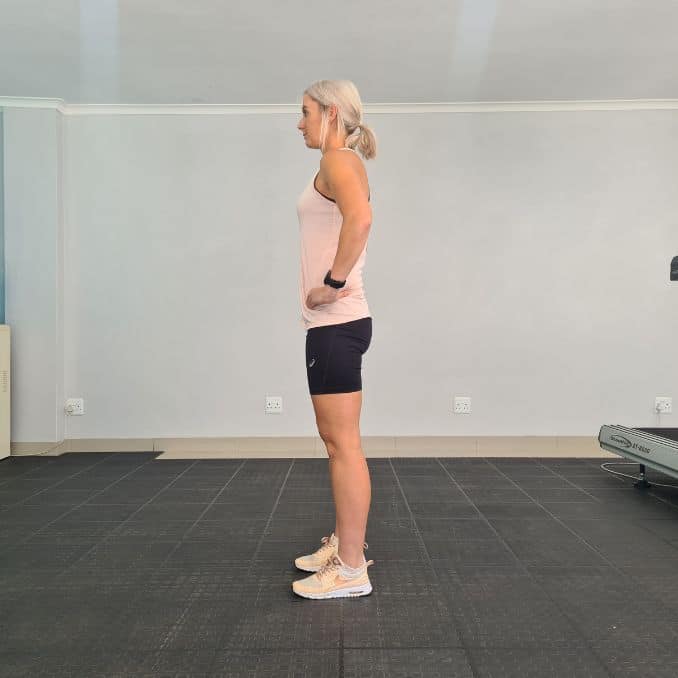 |
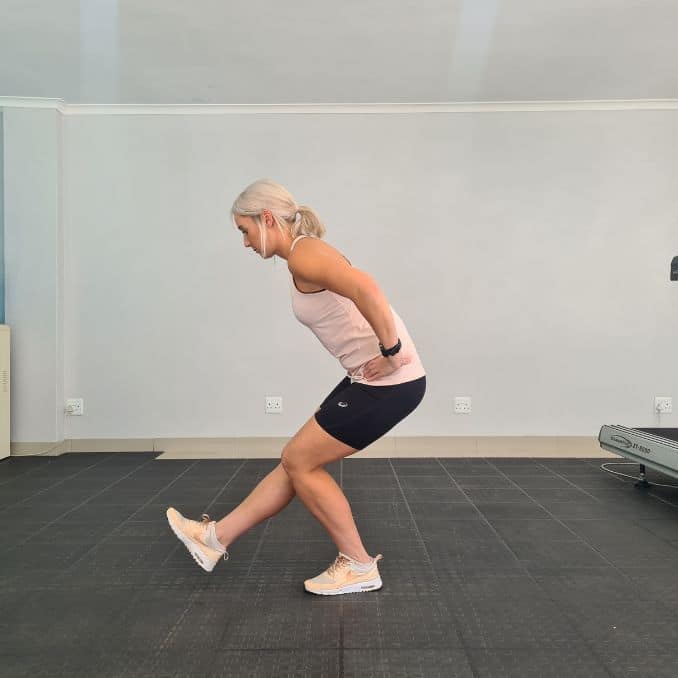 |
Single Leg or Heavy Load Squats
Conclusion
As we age, our joints are more prone to wear and tear. This can mean we feel pain and stiffness in our joints more often than in our younger years. Fortunately, there are plenty of ways to help relieve this pain without going to the gym or opting for expensive doctor-supervised treatments. Also, by keeping active and getting regular exercise, you can help maintain the natural alignment of your joints and prevent pain in the future.
Before starting a new exercise program, check with your physical therapist or healthcare professional. Some moves can pressure your SI joint and trigger SI joint pain. That’s why checking with your doctor before starting any new exercise program to relieve pain is essential. However, the right kind of exercise and the right kind of pain relief may benefit one another. Hence, we’ll look at the best and worst exercises for SI joint pain to help you decide which direction to take.




